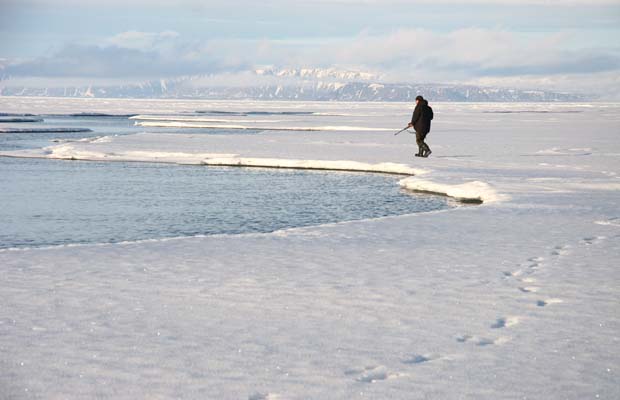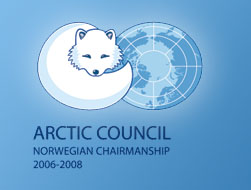 One of the major issues in discourse of Arctic related matters has in recent years been the governance of the Arctic region. Often in public debate it has got forgotten that the Arctic is an area situated on land of eight Arctic states as well as a large sea area defined as high seas under international law. In a following short feature, the contemporary governance shceme of the Arctic region will be discussed and the different legal and political settings participating in the Arctic governance introduced.
One of the major issues in discourse of Arctic related matters has in recent years been the governance of the Arctic region. Often in public debate it has got forgotten that the Arctic is an area situated on land of eight Arctic states as well as a large sea area defined as high seas under international law. In a following short feature, the contemporary governance shceme of the Arctic region will be discussed and the different legal and political settings participating in the Arctic governance introduced.
Contemporary Legal Regime
 As stated in the introduction, the land mass defined as part of the Arctic is situated on a land of eight states, namely Canada, Denmark, Finland, Iceland, Norway, Russia, Sweden and the US. These states govern their territory under international law as sovereign states. Each coastal state occupies in addition a 200 nm Exclusive Economic Zone (EEZ) in the Arctic Ocean, which still today is covered in the most part by snow and ice.The global warming and predicted melting of Arctic sea ice have, however, stimulated the discourse on extended EEZ towards the north pole in a hope of possible natural resource discoveries. All such claims are dealt within the United Nations Commission on the Limits of the Continental Shelf (CLCS) on the bases of the article 76 of the United Nations Convention on the Law of the Sea (UNCLOS). The much publicity gained Russian flag incident does not , therefore, have any legal consequences concerning the sovereignty over the sea bed of the Arctic Ocean.
As stated in the introduction, the land mass defined as part of the Arctic is situated on a land of eight states, namely Canada, Denmark, Finland, Iceland, Norway, Russia, Sweden and the US. These states govern their territory under international law as sovereign states. Each coastal state occupies in addition a 200 nm Exclusive Economic Zone (EEZ) in the Arctic Ocean, which still today is covered in the most part by snow and ice.The global warming and predicted melting of Arctic sea ice have, however, stimulated the discourse on extended EEZ towards the north pole in a hope of possible natural resource discoveries. All such claims are dealt within the United Nations Commission on the Limits of the Continental Shelf (CLCS) on the bases of the article 76 of the United Nations Convention on the Law of the Sea (UNCLOS). The much publicity gained Russian flag incident does not , therefore, have any legal consequences concerning the sovereignty over the sea bed of the Arctic Ocean.
Beyond the national EEZ's opens up an area of high seas which under international law is open to all States, whether coastal or land-locked. The freedom of the high seas includes that all states, whether coastal or land-locked, have a right to navigate, overfly, lay submarine cables and pipelines and construct artificial islands and other installations permitted under international law in the area. Further, in the high seas there exists freedom of fishing, though subject to international fisheries regulation and freedom of scientific research, subject as well to international regulation and cooperation.
 Arctic shipping on the other hand is regulated under the International Maritime Organization (IMO) framework. The IMO regulations cover both environmental issues, including oil pollution, pollution by chemicals, goods in packaged form, sewage, garbage and air pollution (MARPOL 73/78) and safety issues including collision regulations and global standards for seafarers, regulations concerning search and rescue, the facilitation of international maritime traffic, load lines, the carriage of dangerous goods and tonnage measurement (SOLAS, etc.).
Arctic shipping on the other hand is regulated under the International Maritime Organization (IMO) framework. The IMO regulations cover both environmental issues, including oil pollution, pollution by chemicals, goods in packaged form, sewage, garbage and air pollution (MARPOL 73/78) and safety issues including collision regulations and global standards for seafarers, regulations concerning search and rescue, the facilitation of international maritime traffic, load lines, the carriage of dangerous goods and tonnage measurement (SOLAS, etc.).
What is still lacking, however, are legally binding standards for Arctic shipping. According to the AMSA Report 2009, an Arctic Council Protection of the Arctic Marine Environment (PAME) working group prepared large Arctic shipping assessment report, the lack of mandatory regulations for ships operating in Arctic Ice-covered waters is one of the major safety issues still unsolved. In addition, lack fo proper coastal infrastructure and pressure to develop alternative shipping lanes due to pressure on existing lanes such as the Panama and Suez canals are issues that still need to be resolved.
Arctic Political Regime
 The regional governance of the Arctic takes place in different multilateral settings. The major international forum for Arctic governance is the Arctic Council. The Council was established in 1996 with a mandate to promote cooperation, coordination and interaction among the Arctic States in the fields of sustainable development and environmental protection. Member states of the Arctic Council are all the eight states situated in the Arctic region in addition to the Arctic Indigenous representatives who hold a formal status of Permanent Participants in the Council. Further, the Arctic Council welcomes observers in to the meetings. Observer status in the Council have various non-arctic states, inter-governmental and inter-parliamentary organizations and non-governmental organizations.
The regional governance of the Arctic takes place in different multilateral settings. The major international forum for Arctic governance is the Arctic Council. The Council was established in 1996 with a mandate to promote cooperation, coordination and interaction among the Arctic States in the fields of sustainable development and environmental protection. Member states of the Arctic Council are all the eight states situated in the Arctic region in addition to the Arctic Indigenous representatives who hold a formal status of Permanent Participants in the Council. Further, the Arctic Council welcomes observers in to the meetings. Observer status in the Council have various non-arctic states, inter-governmental and inter-parliamentary organizations and non-governmental organizations.
Since the mandate of the Arctic Council is strictly bound to environmental issues, there seems to be a void in discourse concerning other issues. The Nordic countries released common proposals for closer foreign and security policy cooperation between the Nordic countries in beginning of the year 2009 in the so called "Stoltenberg report". Further, Barents Euro-Arctic Council deals with various issues concerning the area both in inter-governmental and inter-regional level. Canada and the US made bilateral agreement on Arctic cooperation in 1988 that allows for practical cooperation regarding matters relating to the Northwest Passage despite the disagreement about the status of the passage under applicable international law.
However, contemporary international jurisdictional issues do not fall within the existing Arctic governance regimes, which has led to an establishment of a yet new cooperation regime between the five Arctic Coastal states, Canada, Denmark, Norway, Russia and the US. This party of five met for the first time in Ilulissat, Greenland in May 2008 in Arctic Ocean Conference to discuss the Arctic Ocean and the unresolved issues of maritime safety, environmental protection and potential shipping routes. The conference issued a declaration where the five Arctic Coastal states reassured compliance of existing legal framework without any intention to initiate new international Arctic legislation. The three Arctic states left outside the meeting as well as the Arctic indigenous peoples were not satisfied with the procedure and felt that the issues should have been dealt with either in the Arctic Council or in a meeting where all the Arctic states and peoples could have had a representation.
The Arctic Indigenous Peoples have yet again expressed their discontent for the upcoming meeting of foreign ministers of the five Arctic Ocean coastal states on March 29, 2010, in Chelsea, Quebec and called for an invitation to the meeting. It is clear that if the five coastal states want to strengthen the cooperation and create a permanent forum for Arctic dialogue they have to include the Arctic indigenous peoples somehow into the cooperation. Question is, however, how a forum of this kind will affect the status of the Arctic Council and how the three non-coastal Arctic states, who despite their geographical situation will one way or another be affected by the decisions made in the coastal states meetings, will be taken into consideration.